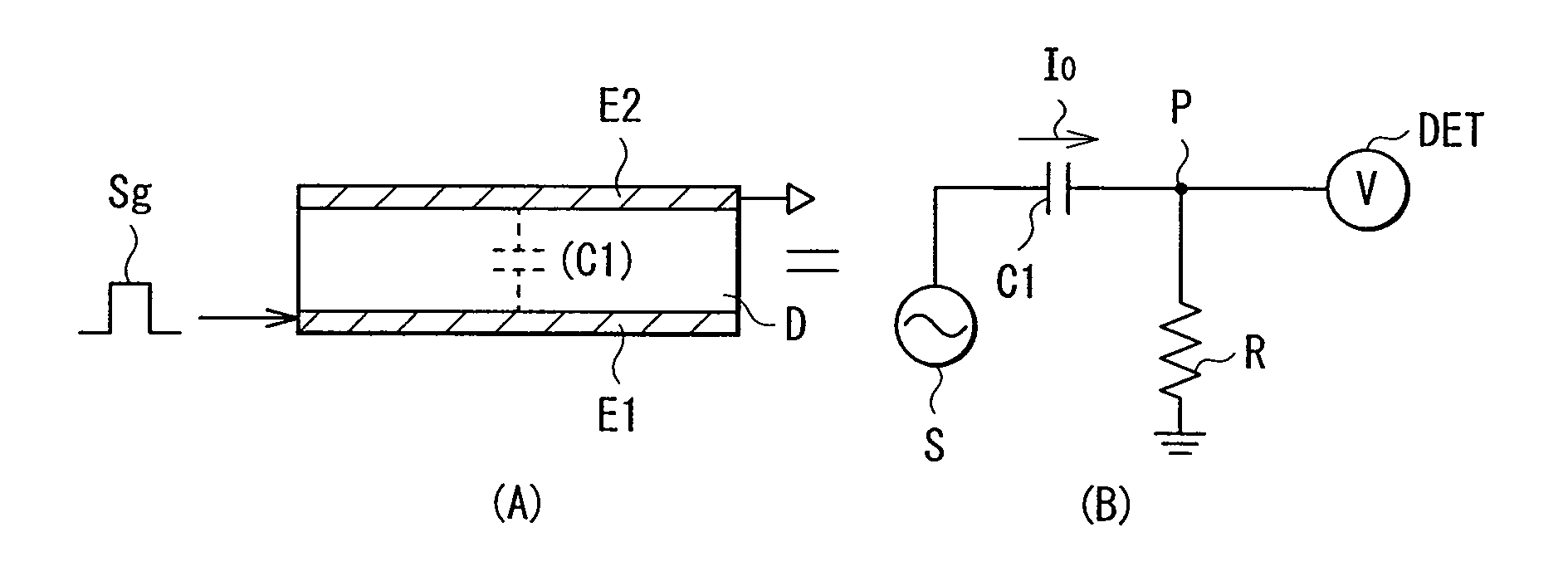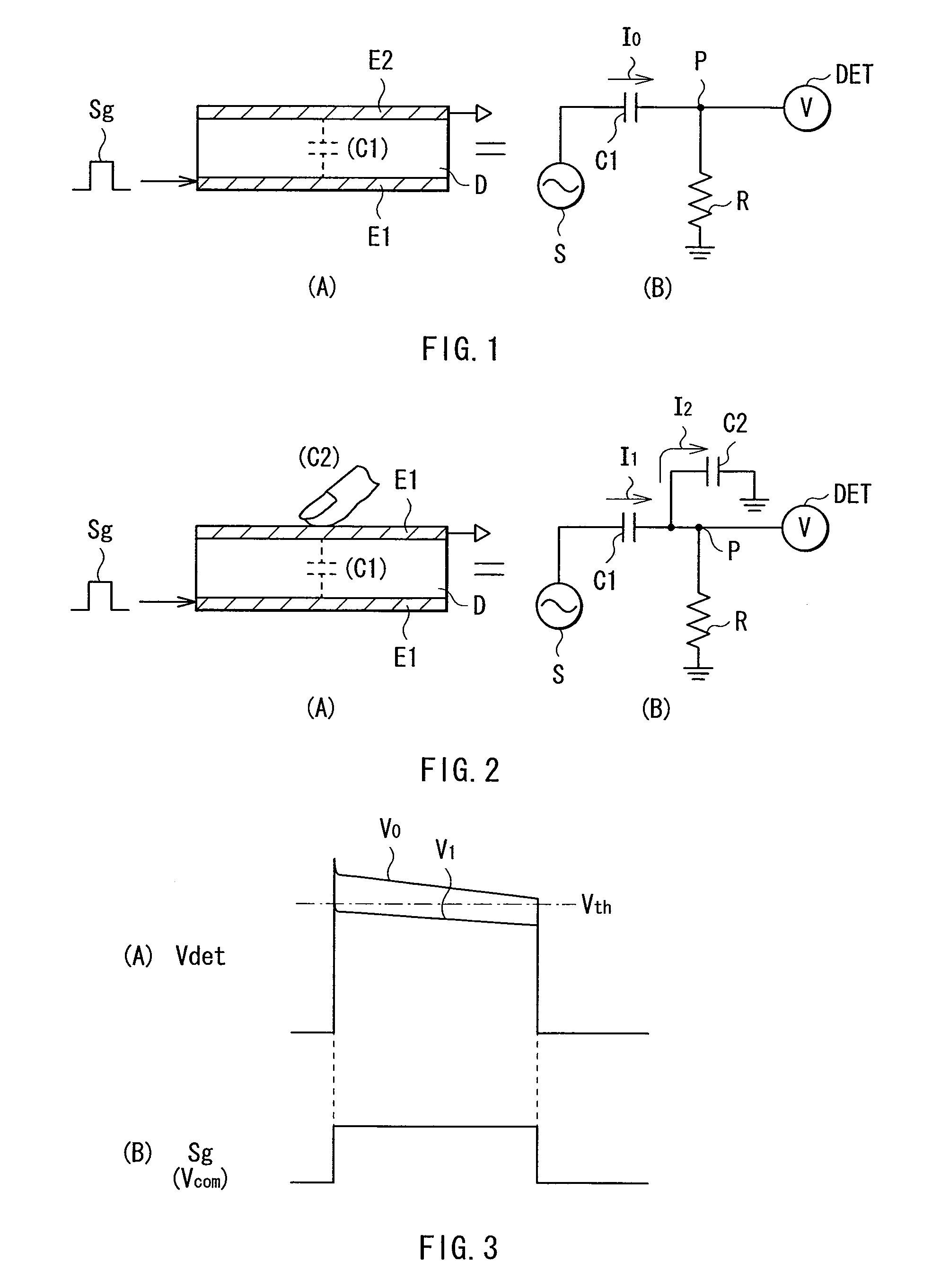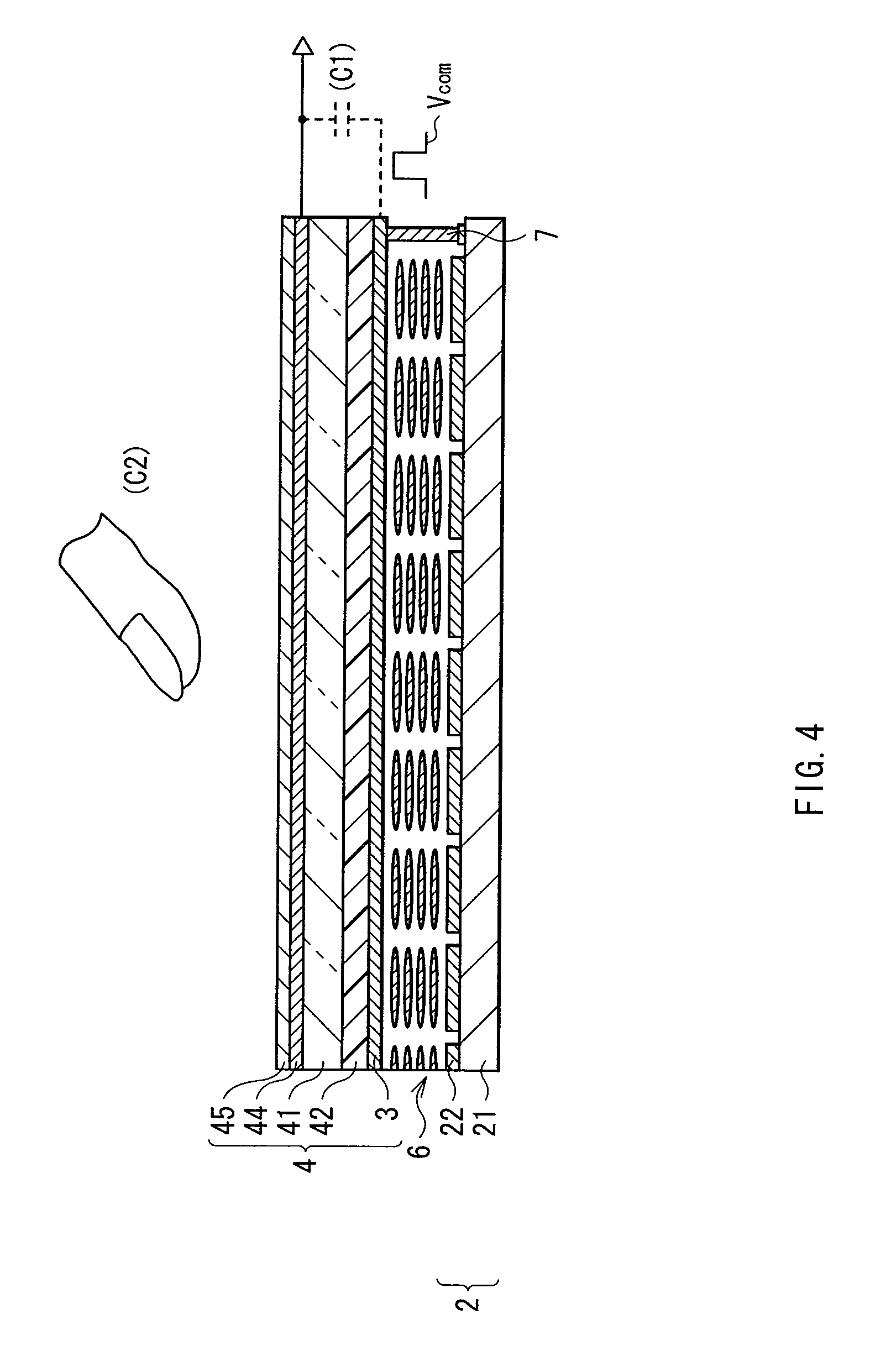Display device with touch sensor
a display device and touch sensor technology, applied in the field of display devices, can solve the problems of low design flexibility, difficult to dispose of touch panel conductive film, difficult to apply liquid crystal display elements with touch panel to mobile devices, etc., and achieve the effect of high design flexibility and easy circuit integration
- Summary
- Abstract
- Description
- Claims
- Application Information
AI Technical Summary
Benefits of technology
Problems solved by technology
Method used
Image
Examples
first embodiment
[0037]FIG. 4 illustrates the cross-sectional configuration of a main part of the display device with the touch sensor of the present embodiment. In this display device with the touch sensor, a liquid crystal display element is used as a display element, and a part of an electrode (common electrode 43, which will be described later) which is originally provided in this liquid crystal display element, and a drive signal for display (common drive signal Vcom, which will be described later) are used also for another purpose, thereby the capacitance type touch sensor is configured.
[0038]As illustrated in FIG. 4, the display device with the touch sensor includes a pixel substrate 2, an opposed substrate 4 facing this pixel substrate 2, and a liquid crystal layer 6 inserted between the pixel substrate 2 and the opposed substrate 4.
[0039]The pixel substrate 2 includes a TFT substrate 21 as a circuit substrate, and a plurality of pixel electrodes 22 disposed in a matrix form on this TFT subs...
second embodiment
[0058]Next, a second embodiment will be described. The present embodiment differs from the above-described first embodiment in that a liquid crystal element of a lateral electric field mode is used as a display element.
[0059]FIG. 9 illustrates the cross-sectional configuration of the main part of the display device with the touch sensor according to the present embodiment, and FIG. 10 illustrates its perspective configuration. In these views, same reference numerals as in FIG. 4 are used to indicate identical components, and thereby the description is appropriately omitted.
[0060]The display device with the touch sensor according to the present embodiment includes a pixel substrate 2A, an opposed substrate 4A facing this pixel substrate 2A, and the liquid crystal layer 6 inserted between the pixel substrate 2A and the opposed substrate 4A.
[0061]The pixel substrate 2A includes the TFT substrate 21, the common electrode 43 disposed on this TFT substrate 21, and the plurality of pixel e...
third embodiment
[0080]In the first embodiment and the second embodiment described above, the detection-electrode-for-the-sensor 44 is disposed in the display region. However, in the present embodiment, as illustrated in FIGS. 16 and 17, the detection-electrode-for-the-sensor 44 is provided in a region (frame region F) surrounding a display region D. FIG. 17 illustrates the plan configuration of the display device with the touch sensor of the present embodiment, and FIG. 16 illustrates the configuration as viewed from the direction of A-A arrow in FIG. 17.
[0081]In this display device with the touch sensor, both the common electrode 43 and the detection-electrode-for-the-sensor 44 are formed on a pixel substrate 2B side, and none of the common electrode 43 and the detection-electrode-for-the-sensor 44 are formed on the opposed substrate 4 side. Specifically, the common electrode 43 is formed on the TFT substrate 21, in the whole display region D. On the other hand, the detection-electrode-for-the-sen...
PUM
 Login to View More
Login to View More Abstract
Description
Claims
Application Information
 Login to View More
Login to View More - R&D
- Intellectual Property
- Life Sciences
- Materials
- Tech Scout
- Unparalleled Data Quality
- Higher Quality Content
- 60% Fewer Hallucinations
Browse by: Latest US Patents, China's latest patents, Technical Efficacy Thesaurus, Application Domain, Technology Topic, Popular Technical Reports.
© 2025 PatSnap. All rights reserved.Legal|Privacy policy|Modern Slavery Act Transparency Statement|Sitemap|About US| Contact US: help@patsnap.com



